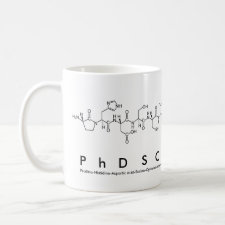
Authors: Abdel-Ghany MF, Hussein LA, El Azab NF
Article Title: Novel potentiometric sensors for the determination of the dinotefuran insecticide residue levels in cucumber and soil samples.
Publication date: 2017
Journal: Talanta
Volume: 164
Page numbers: 518-528.
DOI: 10.1016/j.talanta.2016.12.019
Alternative URL: http://www.sciencedirect.com/science/article/pii/S0039914016309602
Abstract: Five new potentiometric membrane sensors for the determination of the dinotefuran levels in cucumber and soil samples have been developed. Four of these sensors were based on a newly designed molecularly imprinted polymer (MIP) material consisting of acrylamide or methacrylic acid as a functional monomer in a plasticized PVC (polyvinyl chloride) membrane before and after elution of the template. A fifth sensor, a carboxylated PVC-based sensor plasticized with dioctyl phthalate, was also prepared and tested. Sensor 1 (acrylamide washed) and sensor 3 (methacrylic acid washed) exhibited significantly enhanced responses towards dinotefuran over the concentration range of 10-7 - 10-2 mol L-1. The limit of detection (LOD) for both sensors was 0.35 μg L-1. The response was near-Nernstian, with average slopes of 66.3 and 50.8 mV/decade for sensors 1 and 3 respectively. Sensors 2 (acrylamide non-washed), 4 (methacrylic acid non-washed) and 5 (carboxylated-PVC) exhibited non-Nernstian responses over the concentration range of 10-7 - 10-3 mol L-1, with LODs of 10.07, 6.90, and 4.30 μg L-1, respectively, as well as average slopes of 39.1, 27.2 and 33 mV/decade, respectively. The application of the proposed sensors to the determination of the dinotefuran levels in spiked soil and cucumber samples was demonstrated. The average recoveries from the cucumber samples were from 7.93% to 106.43%, with a standard deviation of less than 13.73%, and recoveries from soil samples were from 97.46% to 108.71%, with a standard deviation of less than 10.66%. The sensors were applied successfully to the determination of the dinotefuran residue, its rate of disappearance and its half-life in cucumbers in soil in which a safety pre-harvest interval for dinotefuran was suggested
Template and target information: dinotefuran
Author keywords: sensors, MIP, Dinotefuran, Cucumbers, soil



Join the Society for Molecular Imprinting

New items RSS feed
Sign-up for e-mail updates:
Choose between receiving an occasional newsletter or more frequent e-mail alerts.
Click here to go to the sign-up page.
Is your name elemental or peptidic? Enter your name and find out by clicking either of the buttons below!
Other products you may like:
 MIPdatabase
MIPdatabase









